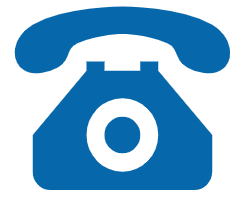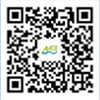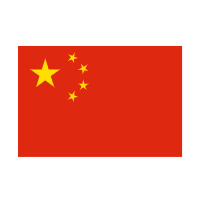Against the backdrop of the rapid development of the pharmaceutical industry, the quality and safety of drugs are directly related to the public's life and health. The government attaches great importance to drug supervision and has introduced a series of strict regulatory requirements to ensure the traceability of drugs throughout their entire life cycle. Drug traceability supervision has become an important measure to ensure drug safety, maintain market order, and enhance public trust, and it is of extremely far-reaching significance.
I. The Importance of Drug Traceability Supervision under Government Regulatory Requirements
Relevant government departments, such as the National Medical Products Administration, etc., in accordance with the "Drug Administration Law of the People's Republic of China" and related regulations, clearly stipulate that drug marketing authorization holders, drug manufacturers, drug distributors, and medical institutions must establish and implement a drug traceability system to ensure that drugs can be traced. This regulatory requirement aims to achieve several important goals.
From the perspective of protecting public health, drug traceability can quickly and accurately locate the source and flow of problematic drugs. Once a drug quality incident occurs, such as adverse drug reactions or the influx of counterfeit and substandard drugs into the market, the problematic drugs can be quickly recalled to prevent more patients from being harmed. For example, if a certain drug is found to have serious adverse reactions, the traceability system can determine the production batch, sales area, and information of the patients who used it within a short period of time, and timely take recall and treatment measures to minimize the damage to public health.
Secondly, it helps to regulate the order of the drug market. The requirements of drug traceability supervision make the information of drug production, circulation, and use transparent, effectively curbing the production and circulation of counterfeit and substandard drugs. When facing a strict traceability system, the cost of counterfeiting and selling counterfeit drugs for criminals increases significantly, and the risks rise remarkably, thus reducing illegal and irregular behaviors in the drug market, protecting the legitimate rights and interests of regular drug enterprises, and promoting the healthy and stable development of the drug market.
Drug traceability supervision provides data support for scientific decision-making in the pharmaceutical industry. Through the collection and analysis of data throughout the entire life cycle of drugs, regulatory authorities can understand the production capacity, quality control level of drug manufacturers, the efficiency and cost of the drug circulation links, as well as the use of drugs in different regions and different medical institutions. This data helps to formulate reasonable industrial policies, optimize the allocation of drug resources, and improve the ability to ensure drug supply.
II. Cases of Efficiency Improvement after the Launch of the Drug Traceability Supervision System
Case 1: Traceability in the Production Process of a Large Pharmaceutical Enterprise
A large pharmaceutical enterprise launched an advanced traceability system in response to the requirements of drug traceability supervision. In the production process, the system uses Internet of Things technology to comprehensively monitor and collect data on raw material procurement, production and processing, and finished product inspection. In the past, when investigating raw material quality problems, it took a lot of manpower and time to check paper records, and the traceability process often took several days. After the new system was launched, by scanning the QR code labels on the raw material packaging, detailed information such as the supplier information, purchase batch, inspection report, and usage on the production line of the raw materials can be traced within a few hours. This has increased the efficiency of locating and solving raw material quality problems by more than 80%, effectively avoiding the occurrence of unqualified batches of drugs caused by raw material problems. At the same time, it has also improved the level of refined production management within the enterprise. The timeliness of production plan adjustment has increased by 50%, and the production cost has been reduced.
Case 2: Traceability of Logistics and Distribution in a Drug Distribution Enterprise
A national drug distribution enterprise has built a drug traceability supervision system based on blockchain technology. During the logistics and distribution process, the system records in real-time the transportation track, temperature and humidity environment data, and warehouse storage information of drugs. Previously, when there was damage or quality anomalies during drug transportation, it was difficult to determine which transportation link or warehouse storage link the problem occurred in, and the responsibility definition was vague, resulting in a long handling cycle. After the new system was launched, due to the non-tamperable nature of blockchain, all data in the logistics links are clearly traceable. Once a drug quality problem occurs, the problem link can be accurately determined and the responsible party can be clearly identified within 1 - 2 days, and the processing efficiency has increased by 60% compared with before. At the same time, due to the transparency of logistics information, the enterprise can optimize the logistics routes and warehouse layout. The logistics and distribution cost has been reduced by about 20%, and the inventory turnover rate of drugs has increased by 30%, greatly improving the overall efficiency of drug circulation.
Case 3: Traceability of Drug Use in Regional Medical Institutions
A regional medical institution alliance jointly established a drug traceability platform. In the drug use process, doctors and nurses scan the drug barcodes before administering drugs to patients, and the system automatically records the drug use time, patient information, and dosage. In terms of adverse drug reaction monitoring, in the past, it relied on patients' initiative to report or doctors' occasional discovery, and then manual retrospective investigation was carried out. The information collection was incomplete and the efficiency was low. After the new platform was launched, it can monitor the drug use situation in real-time. Once an abnormal use frequency of a certain drug or a suspected clustering of adverse reactions is found, the system can automatically issue an early warning and complete the collection and analysis of relevant drug use information within a few hours, providing strong support for timely medical intervention measures. The timeliness of adverse drug reaction monitoring has increased by more than 90%, effectively ensuring the safety of patients' drug use. At the same time, it also provides a rich data source for the post-marketing reevaluation of drugs, promoting the rational use of drugs.
Case 4: Traceability of Cross-regional Drug Supervision and Cooperation
Under the promotion of the national drug regulatory authorities, multiple provinces have established a cross-regional drug traceability supervision cooperation mechanism and information sharing platform. When a certain province discovers problematic drugs that have flowed into the local area, it can quickly query the production, circulation, and use information of these drugs in other provinces through this platform, achieving cross-regional drug traceability and joint supervision. For example, a batch of suspected counterfeit drugs was discovered in a coastal province. Through the cross-regional traceability platform, the sales channels and the involved medical institutions in several inland provinces were identified within 3 days, and timely investigation, punishment, and recall actions were carried out, avoiding the further spread of counterfeit drugs. This cooperation mechanism has increased the response speed of cross-regional drug supervision by more than 70%, effectively cracking down on cross-regional drug-related illegal and criminal activities, and strengthening the unity and coordination of national drug supervision.
In conclusion, drug traceability supervision under government regulatory requirements is of irreplaceable importance for ensuring drug safety and public health. As can be seen from the above practical cases, the launch of the drug traceability supervision system has brought significant efficiency improvements in many aspects, including drug production, circulation, use, and cross-regional supervision cooperation, laying a solid foundation for building a safer, more efficient, and more orderly drug market environment. With the continuous progress of technology and the continuous improvement of the regulatory system, drug traceability supervision will play an even more important role in the development of the pharmaceutical industry.









